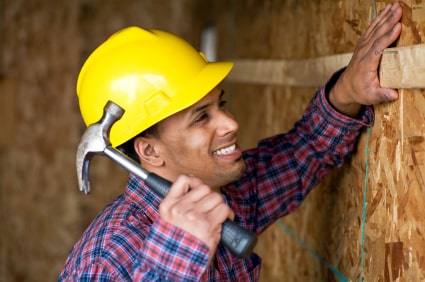
Using green building materials is no longer a trend that a few clients and customers are interested in; it’s an expectation. From residential to commercial building, the use of green building materials has skyrocketed in recent years, and it is expected to continue. Understanding advancements in green building materials ensures that you’re prepared to meet and exceed customer expectations in this area and that your team is prepared for what’s ahead.
Why Green Building Materials?
- Using green building materials isn’t a blanket way to appease those interested in helping the environment. It has tangible benefits which include:
- Reduced emissions. In the United States alone, buildings use one-third of the total energy, which leads to atmospheric emissions that cause acid rain, ground-level ozone and global climate change. When these emissions can be reduced and transformed into more green options, the negative effects are mitigated.
- Energy efficiency through the use of renewable energy sources.
- Lasting final products that are not dependent on outside variables – thermal heating and cooling being two examples.
- Reduced negative effects from the building process itself. When recycled and renewable materials are used, there are fewer negative effects from the process.
Advancements to Know About
Because of the facts listed above, along with the consumer demand for green building materials, staying informed of advancements is critical. A few recent advances relating to green building and potential materials are as follows:
Zero-Carbon and Zero-Net Energy Homes
Zero-carbon and zero-net energy homes are designed to use only the energy that they can produce – because no fossil fuels are used, there are no greenhouse gasses emitted. In the United Kingdom, all new homes are required to be zero carbon by 2016, and Copenhagen is hoping to be the first carbon-neutral capital city in the world by 2025.
Materials that are gaining popularity to accomplish this effect include:
- Insulated concrete walls
- Geothermal wells
- Rooftop solar panels
- Radiant heating floor systems
- V-shaped roofs that collect water
Electrochromic Glass
Electrochromic glass is used to create windows that use embedded technology to transition windows between translucent and opaque. It’s based on the amount of light coming in from outside. This reduces stress on heating and cooling systems while reducing energy dependence at the same time.
Microform Technology Mycelium
Microform Technology Mycelium takes waste and other natural materials that would be considered unusable to create new, strong building materials. The process uses waste, mycelium – a fungus – and heat to fill molded containers to create bricks and other materials that are completely green and environmentally friendly.
Air Cleaning Paint
Designed by Boyson, a paint company headquartered in the Philippines, air cleaning paint uses nanoscale titanium dioxide to interact with light to break down nitrous oxide and other harmful substances, creating a greener, healthier living space.
Smart Lighting
Currently only available in new buildings wired with smart technology, smart lighting improves functionality while cutting down on electricity usage. Smart lighting uses Internet-technology to control lighting based on the needs and schedules of various users or inhabitants of a space. It eliminates energy waste, cuts down on costs and leads to conservation in the long-run.
Green building materials and advancements are changing on a regular basis. To stay informed of what’s on the cutting edge of green technology, consider attending construction events around the world designed to showcase and promote the latest and greatest materials and practices.
Green building is not a passing trend, it’s an expectation. Meet the expectations of your clients by staying well-informed.
 James White is an experienced home improvement blogger and construction worker. His writing has appeared in many publications, including EHS Today, Construction Today, and Building Blok. James is involved in promoting the ideas of sustainable building and construction safety. And, when he’s not saving the planet through his blogging, James revels in exploring the latest developments in the construction and manufacturing industries, its history, its advancements, and where we will be tomorrow. Twitter: @JGtheSavage
James White is an experienced home improvement blogger and construction worker. His writing has appeared in many publications, including EHS Today, Construction Today, and Building Blok. James is involved in promoting the ideas of sustainable building and construction safety. And, when he’s not saving the planet through his blogging, James revels in exploring the latest developments in the construction and manufacturing industries, its history, its advancements, and where we will be tomorrow. Twitter: @JGtheSavage
 Constructionshows
Constructionshows